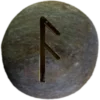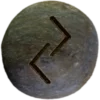Last Updated on June 5, 2025
Table of Contents


Description and Mythology
The Álfar (pronounced OWL-var) are beings from Norse mythology, often translated into English as elves. They appear in Old Norse texts as powerful and sometimes divine spirits connected to nature, fertility, and fate. Their mythological role is complex and layered. They differ from the playful fairies of later folklore. The singular form is álfr (OWL-vr). Sometimes the name appears as alfar, alfir, or alfr depending on transliteration. ![]()
Unlike modern portrayals, the Álfar are not always beautiful or kind. Some are radiant and benevolent. Others are dark and dangerous. These opposing groups are sometimes described as Ljósálfar (LYOHSS-owl-var, “light elves”) and Dökkálfar (DUHK-owl-var, “dark elves”). Light elves live in Álfheimr (OWL-vame-r, “Elf Home”), while dark elves dwell underground or in caves.
They rarely act alone. Álfar often appear as a collective force. They affect crops, health, and luck. People once left offerings to them, especially during the winter months. These offerings ensured blessings or protection from harm. Their connection to fertility makes them a vital part of the Norse spiritual world.
Álfar sometimes blur into other mythic categories. They share traits with dísir (female spirits), vættir (land spirits), and even the dead. Some sources describe them as ancestral beings. They maintain ties to burial mounds and family lines. This overlap shows how Norse people viewed the supernatural—not as rigidly separate realms, but as part of a complex spiritual landscape.
Álfheimr and Divine Connection
Álfheimr, their realm, appears in the Grímnismál, a poem in the Poetic Edda. There, the god Freyr receives Álfheimr as a gift when he first gains his teeth. This link places the elves among divine beings. It also suggests their world lies close to the gods. Some scholars argue that the Álfar once formed a class of minor gods or spirits. Their alignment with Freyr—a fertility god—supports this idea.
Álfheimr is a place of light, beauty, and sacred harmony. Though few details survive, it stands in contrast to the chaotic or grim worlds of other beings. The light elves may act as messengers or helpers of higher gods. Their radiant nature sets them apart from other mythical creatures.
In the Prose Edda, Snorri Sturluson separates the elves into light and dark types. He locates the light elves in the heavens. He places the dark elves underground. Snorri’s descriptions shape much of what survives in written form. Yet even he leaves many questions open.
Álfar don’t only belong to the divine realm. Many tales root them in human experience. They influence everyday life. People feared their wrath and sought their favor. Old customs show how real they once seemed. Food, drink, and even blood were left at stones or trees linked to them.
Folk Belief and Mortal Contact
In later traditions, especially in Iceland, the Álfar become more localized. People speak of them as huldufólk (HULL-doo-folk, “hidden people”). This name reflects their secretive nature. They live in rocks, hills, and remote valleys. They avoid human contact unless provoked or honored. Some stories tell of them borrowing tools, helping with chores, or punishing disrespect.
They can shape events, protect homes, or bring disease. If disturbed, they retaliate. If respected, they bless. Some regions believe they cause illnesses by shooting invisible arrows. Others think they swap newborns with their own, resulting in changelings.
One tradition forbids urinating on elf dwellings—usually large rocks or distinctive land features. Breaking this taboo invites misfortune. Another warns against cutting certain trees believed to house them. These customs remain in parts of Iceland today.
Although Christianity tried to suppress belief in the Álfar, it never fully erased them. The idea of hidden people living alongside humans persisted. They adapted to the new religion but kept their distinct identity. They do not serve demons or saints. They remain nature-bound spirits, independent and powerful.
Álfar are not just relics of the past. They live on in folklore, language, and landscape. Their world reminds us of an older way of seeing nature—not as background, but as alive with meaning and presence.
Runes Associated with the Álfar
The Elder Futhark rune Ansuz (pronounced “AHN-sooz”) represents the Álfar. This rune signifies communication and inspiration, both essential to the elves’ magical essence. Their powers and wisdom link to divine knowledge and insight, symbolized by Ansuz. Laguz (pronounced “LAH-gooz”) also aligns with the elves’ deep connection to nature, water, and intuition. ![]()
Their Importance in Asatru
In Asatru, the Álfar represent wisdom, nature, and beauty, holding a special place in ritual and honor. Followers see them as powerful spirits connected to nature, drawing inspiration from their wisdom and unique abilities. Honoring the Álfar reminds followers of nature’s balance and the magic present in the world, encouraging a deeper respect for all life. Their presence adds depth and mystery to Asatru practices.


